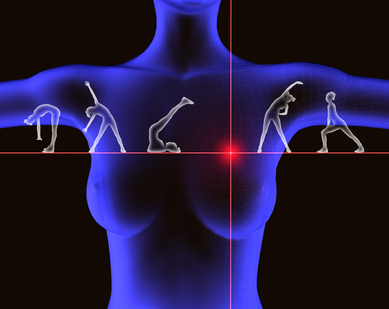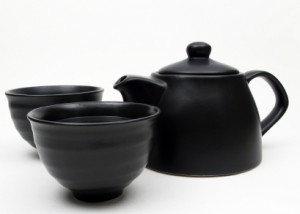Guyside: Getting testy about testosterone
 There’s no doubt that men think about the effects of aging on their bodies. And if there were, a viewing of ads for hair colouring, hair thickening agents, or erectile dysfunction drugs would quickly convince you. You could be a new man!
There’s no doubt that men think about the effects of aging on their bodies. And if there were, a viewing of ads for hair colouring, hair thickening agents, or erectile dysfunction drugs would quickly convince you. You could be a new man!
And as regular Flashfree readers will know, one of the things that’s been touted as a solution to the woes of the aging male is testosterone replacement therapy.
The basic idea is that men may have a condition that’s referred to as “Low T.” And so a gel, a patch, a tablet or an injection may bring you back to a more energetic, athletic, virile condition. The pitch has been made more and more convincingly, by all accounts: an Australian research team found that the sales of testsosterone treatments went from $150 million in 2001 to $1.8 billion in 2012.
That’s a 1200% increase. The Australian research indicated that the amount of testosterone being prescribed far outstripped the incidence of “male menopause” or andropause. So what’s going on? Oh, I suspect there’s a generous helping of vanity involved here.
But if it were simply a matter of making men feel better about themselves, it would just be a waste of money. A growing body of research evidence is suggesting that treating Low T may increase the risk of cardiac events. The most recent, an article from the open-access journal PLOS ONE, suggests a substantial increase in the risk of myocardial infarction — what we normally refer to as a heart attack — with the use of testosterone, for men under and over 65 years of age.
I’m sure there are men with diagnostic criteria that would make testosterone therapy an appropriate choice, with a careful calculation of the risks and benefits. But if my hair’s getting a little thin, if I’m not feeling as “macho” as I once was — do I really want to be using a hormone supplement that could put me at risk of a heart attack?
It’s very easy to succumb to marketing-based pitches that appeal to what we think we need as men. But it’s important for us to not jump at those pitches without thinking about the risks and the benefits carefully.
There was a rush to use estrogen and progesterone to help women with symptoms of menopause several years ago, and then a panic when those therapies were associated with increased cardiac symptoms.
I’m no doctor, and I’m certainly not saying that nobody should be using hormones in this way. But I do think that we should think through ALL of our medical decisions and ensure we’re taking the risks seriously.
(photo: CC-licenced image by Flickr user Ed Schipul)
Read MoreHave a heart? Move your body!
Ladies, listen up! Roughly one third of your life is spent in menopause and thereafter, which is why it’s so important to manage your health appropriately. One of the greatest issues during this time is heart disease, and after menopause, women are exponentially at increased risk for developing cardiovascular conditions compared to their male peers. Although there are numerous reasons for this increased risk, changes in hormones, namely estrogen, can set the wheels in motion, affecting weight, cholesterol levels and in some women, the way that they process sugar in their bloodstream. The bottom line is that as we lose the protective effects of the ovarian hormones, our cardiovascular system is at increased risk. Moreover, one of the most important consequences is the impact on what researchers refer to as ‘autonomic cardiovascular control,’ i.e. heart rate, pressure in the arteries, the ability of the heart to contract properly and the overall ability of the blood vessels to increase the amount of blood that they hold without significantly increasing blood pressure.
Until now, hormone replacement has been the go-to strategy to modify these heart disease risks. Yet, as we all know, the benefits of HRT with regard to heart disease prevention have been challenged and in fact, some studies show an increased rate of stroke and heart events.
The good news is that researchers are now saying that regular physical exercise may be the answer!
It’s a fairly well known fact that physical exercise can improve quality of life and even reduce the risk and/or overall progression of heart disease. One of the ways that it confers its protective effect is the direct impact on autonomic cardiovascular control mentioned earlier in this post. In particular, study findings suggest that regular physical activity may help modulate heart rate and correct the pressure in the arteries (which tends to bounce all over the place as estrogen declines and we age), although for reasons that are unclear, the same benefits are not seen in women who have undergone early menopause.
A common thread found in Flashfree over the years has been to move your body. Aside from weight, wellbeing and perhaps a balancing of vasomotor symptoms, regular exercise may also act as a buffer against physiological changes that occur as estrogen declines and heart disease risk soars.
There’s no time like the present. Get moving!!!!
Read MoreThe gift of a lifetime…
I’ve been on a bit of a personal rage lately – a rage about weight gain and the ‘pause.
No time like the present to give yourselves the gift of a lifetime: aim for a healthy weight before you hit menopause.
We’ve discussed it time and again on Flashfree; weight gain and menopause go hand in hand like a horse and carriage. And with that weight gains comes an increased risk for developing heart disease, diabetes and the dreaded metabolic syndrome. However, last year, researchers from the University of Ottawa reported that entering full menopause with a healthy body mass index (BMI) actually confers protection.
In the study (which appeared online in the journal Menopause), researchers evaluated and observed 102 premenopausal women for body composition and changes in their cardiovascular health profiles. The women, all of whom were between 47 and 55 years of age, did not smoke, had a BMI between 20 and 29 and had had a stable weight for at least 6 months before the study started, were followed for five years. Each year, the researchers gauged if they had entered menopause, measured body composition (i.e. total fat mass, trunk fat mass and total fat free mass), waist size, the degree of abdominal fat and took blood to examine glucose, insulin and blood fat levels.
The study’s lead researcher, Dr. Denis Prud-homme explains that by simply observing the women and not imposing any structured interventions (e.g. diet or exercise) they were able to assess changes within a more naturalistic environment. At the study’s end, they discovered that despite significant increases in fat mass, visceral abdominal fat, blood glucose and cholesterol levels, most of which were the natural result of hormone fluctuations and aging, the women did not appear to have any declines in their heart or metabolic profiles that would indicate an increased risk for disease. Dr. Prud-homme says that a possible explanation might be that “even if the area of visceral fat is increased, it is still under the critical threshold associated with cardio-metabolic deterioration.” In other words, by maintaing a healthy lifestyle and BMI premenopausally, these women were able to change their risk equations once they fully entered menopause.
The bottom line is that the present you give yourself now will last long into your later years. Exercise. Eat right. And pay attention to your health.
No time like the present. For a present. Give yourself one.
Read MoreTea, for two…or two, for
a reduced stroke risk?!
I have some exciting news for you dear readers: the American Heart Association announced yesterday that incorporating two cups of green tea and even a cup of coffee a day can help reduce stroke risk.
The accruing evidence for the value of green tea or coffee in the fight against certain diseases has been steady but mixed. In other words, there has been a mixed bag of findings with some research showing green tea’s advantage when it comes to heart disease risk (but not stroke) and coffee’s ability to reduce the likelihood of diabetes and certain types of cancer. But these studies have focused on different outcomes, have been small and have’t always included the same type of people in terms of age, gender or overall health.
This time, Japanese researchers asked over 83,000 adults about their daily green tea and coffee drinking habits and then followed them for 13 years. Over this time period, they also measured stroke, heart attacks and sudden death from heart disease, and accounted for factors that could also affect stroke risk, such as smoking, alcohol, BMI, diabetes, high blood pressure, exercise, and daily diet (fruit, vegetables and fish intake). The age range was between 45 and 74, the pool was pretty equally balanced in terms of gender and all were free of cancer and heart disease at the start.
So, what did they learn?
Drinking two to three cups of green tea a day was linked to a 14% lower risk of stroke; four or more cups was linked to a 20% lower risk. Among coffee drinkers, just one cup a day (6 oz serving, caffeinated) appeared lower stroke risk by as much as 20%. And for either group? Both had about a third lower risk of experiencing a type of stroke (intracerebral hemorrhage) in which a blood vessel bursts and there is bleeding inside the brain.
There are a lot of theories why green tea and coffee are heart disease busters. Green tea, for example, contains antioxidants called catechins, which are believed to protect the vascular system. Coffee contains substances that may decrease insulin sensitivity and improve overall blood glucose levels. Together, they appear to create a super heart protective benefit.
Heart disease is the number one killer of women and risk grows as we age. Diet and exercise, cigarette smoking and alcohol all play important roles. And it looks like just a few cups of green tea or a cup of coffee daily can help cut our risk substantially while still enriching our health in other ways. Cuppa anyone?!
If you are interested in learning more, the study is reported in Stroke: Journal of The American Heart Association.
Read MoreWednesday Bubble: Women, Heart Disease & Diet
Yes, it’s Monday and I’ve already posted today’s piece. However, nothing like bursting the ol’ Wednesday Bubble early. So, ladies, listen up! When it comes to heart disease, namely a heart attack, your diet matters. In fact, researchers report that eating three or more servings of blueberries or strawberries a week can cut the risk of heart attack by as much as a third.
Nevermind the early Wednesday Bubble; have I got your attention yet?!!
Aging is a risk factor for heart disease, a leading cause of death in women. Moreover, the reason that more and more women start to die from heart disease as they grow older appears to have everything to do with the ability of cells to repair and replenish circulation and not much at all to do with waning hormone levels. You can read about that here. Cholesterol levels and weight gain also play a role. As does diet, in particular, the incorporation of flavonoids — compounds that are ubiquitous in nature — and found in many plant-based foods including fruits, vegetables, tea and wine. Yet, of the 4,000 some odd flavonoids that exist, which are the most beneficial in heart disease?
To tease out this answer, researchers followed over 93,000 women enrolled in the Nurses Health Study II over a period of 18 years. During this time, the women, all of whom were between the ages of 25 and 42 at enrollment, completed questionnaires about their diets every four years. Their findings? Women who reported eating higher levels of a subclass of flavonoids known as ‘anthocyanins,” which are responsible for the red, purple and blue colours of many fruits and vegetables, had as much as a 32% reduction in the risk for heart attack. Indeed, for every 15 mg increase in dietary intake of anthocyanins, the relative risk of having a heart attack declined by 17%. Importantly, these results remained unchanged even when researchers factored in other plant-based food constituents (such as potassium or folate), total fruit and vegetable intake, as well as alcohol drinking, and the presence of high blood pressure and/or diabetes.
The researchers point out that anthocyanins are believed to dilate arteries, counter the buildup of plaque and inhibit other mechanisms that contribute to atherosclerosis. Understanding how they work to counter the risk of a heart attack is important because the mechanisms underlying heart attack in younger and middle aged women versus their older peers, are different.
Of note, blueberries and strawberries were part of the analysis because they are the most eaten berries in the U.S. That aside, it is possible that eating other foods that have high levels of anthocyanins could produce similar benefits.
Want to stave off your risk of a heart attack? Eat more berries every week. It’s an easy fix for what could be a huge problem and there’s no time like the present to start on the path to heart health.
(This study appears in the online version of Circulation, the Journal of the American Heart Association.)
Read More
Wednesday Bubble: I like big butts…
I cannot lie?
Okay, I don’t know if I aspire to ‘quite a spread’ but I am here to tell you that things could be worse. In fact, if you’ve ‘got back’ you may be healthier than some women.
It seems that a large derriere and thighs may actually extend your life. The reason? Researchers say that fat particles that end up in these areas help trap harmful fatty acids in our diet.
Although they are unsure of the exact reasons why, researchers do say that unlike abdominal fat, which has been linked to metabolic syndrome, lower body fat, i.e., fat that accumulates in the thighs and backside, has actually been confirmed to play a protective role in the body. And, it not only stores unhealthy fatty acids, but may also release harmful compounds more slowly than say, abdominal fat.
So if you’ve got back, are you in the clear to eat whatever you want? Not so fast. Even though your derriere offer a protective role, there are other reasons to eat and stay healthy – not only to maintain optimal cholesterol levels, but also to counteract some of the natural effects of declining estrogen, such as weakening bones.
(The study appeared in the January 12 online edition of the International Journal of Obesity.)
Read More










